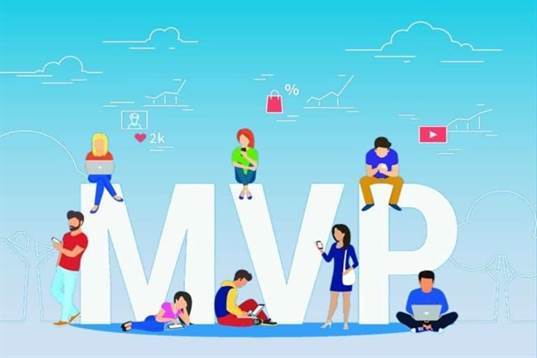In the waterfall model, once a phase seems to be completed, it cannot be changed, and due to this less flexible nature, the waterfall model is not in practice anymore. It is a process followed for software building within a software organization. SDLC consists of a precise plan that describes how to develop, maintain, replace, and enhance specific software. The life cycle defines a method for improving the quality of software and the all-around development process. The typical stages of the system development life cycle are planning and feasibility, requirements analysis, design and prototyping, software development, system testing, implementation, and maintenance. Finally, the planning process clearly defines the outline of system development.
- This approach also ensures that the provider can constantly measure itself to interpret the requirements of – and deliver the best solution to – the client.
- Once you’ve got your design plans in front of you, it’s time for wireframing and mockups.
- In short, the iterative and incremental model works through multiple, repeated, and incremental cycles so developers can pinpoint which areas to improve based on previous deployments of the software.
- Introducing a new clinical information system or component, including electronic health record systems, is a major undertaking for healthcare organizations.
- The main goal of the Agile model is to facilitate quick project completion.
- It can also include adding new features or functionality to a current product.
In other words, the team should determine the feasibility of the project and how they can implement the project successfully with the lowest risk in mind. This article will explain how SDLC works, dive deeper in each of the phases, and provide you with examples to get a better understanding of each phase. When teams have clarity into the work getting done, there’s no telling how much more they can accomplish in the same amount of time. Empower your people to go above and beyond with a flexible platform designed to match the needs of your team — and adapt as those needs change.
Benefits of SDLC (System Development Life Cycle)
In conclusion, we now know that Software Development Life Cycle (SDLC) software engineering is an important framework for the better and more structured development of optimized software programs. In a world full of rapid evolution in technology, SDLC phases plays a crucial role in enabling some good and innovative solutions for helping users and organizations. Also, it’s better to adapt SDLC principles to achieve software development goals effectively.

Application performance monitoring (APM) tools can be used in a development, QA, and production environment. This keeps everyone using the same toolset across the entire development lifecycle. Popular SDLC models include the waterfall model, spiral model, and Agile model.
Other types of Testing
Cue the Software Development Life Cycle which allows the team to work on manageable phases until the project is released. By doing so, teams establish a systematic fashion to go about creating new solutions to existing problems in a controlled and standardized manner. Ideally, System Analysts are highly skilled and knowledgeable in multiple operating systems, hardware configurations, programming languages, and software and hardware platforms.

It’s mostly used to develop broad ideas when the customer or client isn’t sure what they want. After testing, the overall design for the software will come together. Different modules or designs will be integrated into the primary source code through developer efforts, usually by leveraging training environments to detect further errors or defects. Once complete, development managers will prepare a design document to be referenced throughout the next phases of the SDLC. Furthermore, developers will often create a software requirement specification or SRS document. The Spiral model best fits large projects where the risk of issues arising is high.
Stage 5: Test the product.
A more concrete vision of project completion is gained via delivering different system variations that may more accurately define the final output. The Iterative model is often favored because it is adaptable, and changes are comparatively easier to accommodate. This is particularly important for large systems, which usually are more difficult to test in the debugging stage. Getting a new system deployed is exciting, but don’t rush into deployment without thoroughly testing the system. Software testing must take place in a specialized testing environment and should test the full functionality of the system (the test environment).
It is often incorrectly equated with the actual development process but is rather an extensive prototyping stage. The next stage of a system development project is design and prototyping. Once the planning is done, it’s time to switch to the research and analysis stage.
systems development life cycle (SDLC)
If so, the testing portion of the process is just a matter of ensuring that the system meets the quality standards laid out in the SRS document. The testing phase is critical to ensure that the system is free of bugs and functioning as expected. An SRS document specifies the project’s software, hardware, network, and functional requirements. All alternatives and options will be thoroughly analyzed during this phase to determine which requirements will impact system performance most. Project management methods shall be used to control the development process. Any Forensic Laboratory employee that is involved in software development shall have the appropriate training, experience, and qualifications for the required development work.
Mostly used for creating and delivering a wide range of ideas, this model perfectly fits the clients who don’t have a clear idea or vision of what their final product should look like. This process involves detecting the possible bugs, defects, and errors, searching for vulnerabilities, etc., and can sometimes take up even more time compared to the app-building stage. As a rule, these features help to finalize the SRS document as well as create the first prototype of the software to get the overall idea of how it should look like.
Design
The Agile model has existed for a long time, and still hasn’t lost its punch. Lately, the model is widely adopted by organisations, and it is proven to be quite the driving force behind software development. Some companies see so much value in the model that it is used for other projects, including non-technical projects and activities. The SDLC process consists of seven phases, including planning, design, testing, and maintenance. Every phase can be supplemented by various tools to support the phase’s main goal.
Before your developers can move onto the development stage of the process, you must first address system design. The design phase transforms the information in the SRS document into a logical structure. Each of the testing steps in the development/configuration phase is tested against a step in the design phase. This ensures that the objective of the system is met and that it is fit for purpose. Most solution providers use the waterfall life cycle approach for software solution development.
The SDLC Phases
Once the system development project has been deemed feasible, the next step is to analyze the available information and define the system’s requirements. The end product of the analysis phase will be a Software Requirement Specification (SRS) document. The longer your business pursues an infeasible project, the more money and resources will be wasted. If, at the end of the planning phase, your organization realizes the feasibility is dubious, don’t be afraid to walk away and rethink your system development project. This high-risk SDLC model throws most of its resources at development and works best for small projects. It lacks the thorough requirements definition stage of the other methods.
Books such as David Avison and Guy Fitzgerald’s Information Systems Development and Alan Daniels and Don Yeates’ Basic Systems Analysis, delve into the intricacies of information systems development lifecycles. This article will provide an in-depth analysis of the history, definition, phases, benefits, and disadvantages, along with solutions that support the system development life cycle. SDLC products from software vendors promise organizational clarity, modern process development procedures, legacy application strategies, and improved security features.
How to Choose a Software Development Company: Fundamental Do’s and Don’ts
One big disadvantage here is that it can eat up resources fast if left unchecked. “Let’s get this closer to what we want.” The plan almost never turns out perfect when it meets reality. Further, as conditions in the real world change, we need to update and advance the software to match. In short, system development life cycle we want to verify if the code meets the defined requirements. For example, define a nomenclature for files or define a variable naming style such as camelCase. This will help your team to produce organized and consistent code that is easier to understand but also to test during the next phase.
